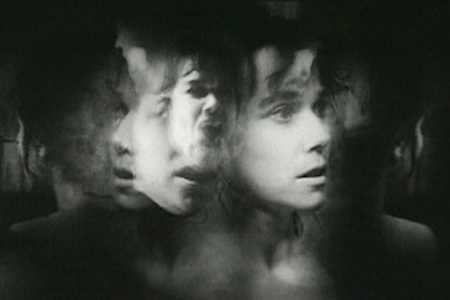A long-anticipated event for many a film geek, the newest edition of the Sight & Sound Film Poll was announced today. Conducted only once every ten years since 1952, the poll is the longest-running of its kind, and a key indicator of prevailing tastes and trends among the community of film experts from one decade to the next. I’ve done my share of anticipatory activity leading up to the new poll: On the Press Play blog at Indiewire, I conducted a roundtable conversation discussing the poll. I also produced a series of videos with several film critics I admire, exploring selections from each of their own top ten lists. Now I’ve produced a video essay exploring a couple of my own selections for the ten greatest films of all time: Man with a Movie Camera and Outer Space, both of which are available to view on Fandor.
Caution: This video contains strobe light effects, which may be harmful for people with photosensitive epilepsy.
TRANSCRIPT
For the Sight & Sound Critics Poll of the greatest films of all time, I picked ten films, each one from a different decade, as well as from a different country.
Les Vampires (1915)
Man with a Movie Camera (1929)
Love and Duty (1931)
Under the Bridges (1946)
Mother India (1958)
The House Is Black (1962)
Killer of Sheep (1977)
City of Sadness (1989)
Outer Space (1999)
Bamako (2006)
Looking at this top ten, I see two films that resonate with each other, even though they were made 70 years apart. What do these films have in common? First, they are radical, groundbreaking approaches to genre moviemaking. I tend to prefer films that break the rules of genre instead of epitomizing them.
With Man with a Movie Camera, here’s a film that on one level is a documentary. Director Dziga Vertov captures an astounding array of life in the Soviet Union. But he breaks so many conventions of documentary, and of most movies for that matter. Narrative storytelling, characters, and even overt meaning: The film rejects all of these principles. It wants to break free from the world of theater and literature and speak in a language of pure cinema. This movie was generations ahead of its time, and I’d say it’s still ahead of ours as well.
Outer Space is my favorite horror movie of all time. It’s only 10 minutes long, but I think those ten minutes capture the essence of what movie horror is all about. The film is actually a kind of remake of a 1981 horror film The Entity, starring Barbara Hershey as a woman being attacked by an invisible, supernatural force. Director Peter Tscherkassky took a celluloid print of the movie and ran it through an untold number of experimental effects, creating something that’s 1,000 times more powerful and scary than the original.
I think both films are supreme examples of the art of film editing. I produce video essays, and half of what I do basically comes down to editing, so I might be biased. But I think editing is the most underappreciated component of a movie, compared to the acting, writing, cinematography, or even sound. Most times, you only notice editing when you notice something wrong with it.
Man with a Movie Camera: Don’t let the title mislead you. This movie is as much about the power of editing as it is about the movie camera. The film unleashes dozens of techniques: dissolves and multiple exposures, stop motion and time lapse, jump cuts and juxtapositions. The film is an essential handbook for every film and video editor, and it’s an eye-opener for anyone interested in how movies are put together, piece by piece.
With Outer Space, we see a movie being taken apart piece by piece, using some of the same techniques as Vertov, but mainly through a painstaking process. Tscherkassky used special laser beams and multiple exposures to manipulate the source footage, spending as much as an hour on each second of film. The images, as well as the amazing soundtrack, become highly unstable, heightening our sense of excitement and dread. It’s as if the celluloid film print itself were being assaulted. We find ourselves watching a film literally falling apart before our eyes.
That is perhaps the supreme achievement of Outer Space, as well as Man with a Movie Camera. Both films pull off an amazing double feat. They make us aware that what we are watching is just a movie. But that awareness doesn’t take us out of the film, instead it pushes us deeper into it. These films are celebrations of cinema’s most basic elements: light, dark, and motion. When I watch these two films, I see those basic elements opening into limitless possibilities.
Kevin B. Lee is Editor in Chief of IndieWire’s PressPlay Video Blog, Video Essayist for Fandor’s Keyframe, and a contributor to Roger Ebert.com. Follow him on Twitter.




